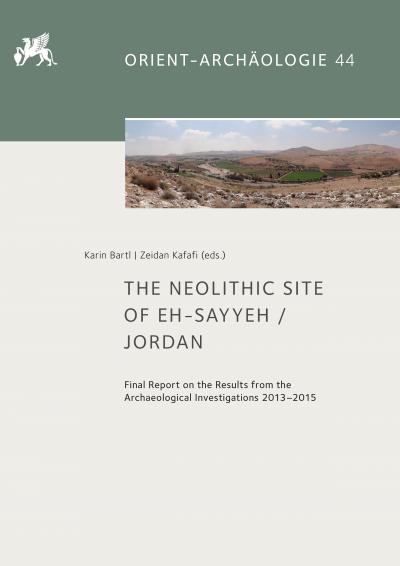List of Contributors
- Karin Bartl [Volume editor] German Archaeological Institute, Orient Department
- Zeidan Kafafi [Volume editor] https://orcid.org/0000-0002-4262-4618 Yarmouk University, Faculty of Archaeology and Anthropology
- Thomas Urban [Chapter Author] Deutsches Archäologisches Institut, Orient-Abteilung
- Laura Dietrich [Chapter Author] https://orcid.org/0000-0002-7570-0576 Martin-Luther-Universität Halle-Wittenberg
- Kristina Pfeiffer [Chapter Author] https://orcid.org/0009-0008-8350-0882 Deutsches Archäologisches Institut, Orient-Abteilung
- Dörte Rokitta-Krumnow [Chapter Author] Deutsches Archäologisches Institut, Orient-Abteilung
- Bernhard Weninger [Chapter Author] https://orcid.org/0000-0003-2390-6529 Universität zu Köln
- Mustafa al-Naddaf [Chapter Author] https://orcid.org/0000-0002-7284-7804 Yarmouk University, Faculty of Archaeology and Anthropology
- Reinder Neef [Chapter Author] Deutsches Archäologisches Institut, Referat Naturwissenschaften
- Norbert Benecke [Chapter Author] https://orcid.org/0000-0003-2388-8594 Deutsches Archäologisches Institut, Referat Naturwissenschaften
- Julia Gresky [Chapter Author] https://orcid.org/0000-0003-3493-2757 Deutsches Archäologisches Institut, Referat Naturwissenschaften
The archaeological site of eh-Sayyeh is located north of the city of az-Zarqa in central Jordan and was re-explored between 2013 and 2015 after initial investigations in the 1990s. It has a longer sequence of Neolithic layers from the late 8th and 7th millennia BC (calibrated dates) and shows also traces of more recent occupation up to Late Antiquity. The results of the 2013–2015 excavations prove that the settlement phases LPPNB (7500–7000/6900 BC) and PPNC (7000/6900–6400 BC) are characterised by clear continuities in terms of subsistence, architecture and the inventory of chipped lithic finds, which can be traced in part to the Yarmoukian.
Published
June 27, 2024Series
Print ISSN
1434-162XBibliographic Information and Reviews
Copyright (c) 2024 Deutsches Archäologisches InstitutChapters










 Stumble It!
Stumble It!

No comments:
Post a Comment